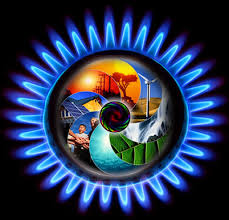What is Energy storage?
Energy storage is accomplished by devices or physical media that store some form of energy to perform some useful operation at a later time. A device that stores energy is sometimes called an accumulator.
All forms of energy are either potential energy (e.g. Chemical, gravitational, electrical energy, etc.) or kinetic energy (e.g. thermal energy). A wind-up clock stores potential energy (in this case mechanical, in the spring tension), a battery stores readily convertible chemical energy to operate a mobile phone, and a hydroelectric dam stores energy in a reservoir as gravitational potential energy. Ice storage tanks store ice (thermal energy) at night to meet peak demand for cooling. Fossil fuels such as coal and gasoline store ancient energy derived from sunlight by organisms that later died, became buried and over time were then converted into these fuels. Even food (which is made by the same process as fossil fuels) is a form of energy stored in chemical form.
Where Energy storage?
Energy storage as a natural process is as old as the universe itself - the energy present at the initial formation of the universe has been stored in stars such as the Sun, and is now being used by humans directly (e.g. through solar heating), or indirectly (e.g. by growing crops or conversion into electricity in solar cells).
As a purposeful activity, energy storage has existed since pre-history, though it was often not explicitly recognized as such. An example of deliberate mechanical energy storage is the use of logs or boulders as defensive measures in ancient forts—the logs or boulders were collected at the top of a hill or wall, and the energy thus stored used to attack invaders who came within range.
A more recent application is the control of waterways to drive water mills for processing grain or powering machinery. Complex systems of reservoirs and dams were constructed to store and release water (and the potential energy it contained) when required.
How is the development of Energy Storage?
Storing energy allows humans to balance the supply and demand of energy. Energy storage systems in commercial use today can be broadly categorized as mechanical, electrical, chemical, biological and thermal.
Energy storage became a dominant factor in economic development with the widespread introduction of electricity and refined chemical fuels, such as gasoline, kerosene and natural gas in the late 19th century. Unlike other common energy storage in prior use such as wood or coal, electricity must be used as it is being generated, or converted immediately into another form of energy such as potential, kinetic or chemical. Until recently electrical energy has not been converted and stored on a major scale, however new efforts to that effect began in the 21st century.
In the U.S., the 2009 Stimulus Plan helped finance research into energy storage and its integration with smart electrical grids. Electricity is transmitted in a closed circuit, and for essentially any practical purposes cannot be stored as electrical energy. This means that changes in demand can not be accommodated without either cutting supplies (as by brownouts or blackouts) or by storing the electric energy in another medium.
Even renewable energy must be stored in order to make it reliable. Wind blows intermittently and so some form of storage is required to compensate for calm periods. Solar energy is equally not available on cloudy days and during the nighttime, so stored energy must be available to compensate for the loss of sunlight.
An early solution to the problem of storing energy for electrical purposes was the development of the battery as an electrochemical storage device. Batteries have previously been of limited use in electric power systems due to their relatively small capacity and high cost, however since about the middle of the first decade of the 21st century newer battery technologies have been developed that can now provide significant utility scale load-leveling capabilities. A similar possible solution to deal with the intermittency issue of solar and wind energy is found in the capacitor.
In the 1980s, a number of manufacturers carefully researched thermal energy storage (TES) to meet the growing demand for air conditioning during peak hours. Today, several companies manufacture TES systems. The most popular form of thermal energy storage for cooling is ice storage, since it can store more energy in less space than water storage and it is also less costly than energy recovered via fuel cells or flywheels. Thermal storage has cost-effectively shifted gigawatts of power away from daytime peak usage periods, and in 2009 was used in over 3,300 buildings in over 35 countries. It works by creating ice at night when electricity is usually less costly, and then using the ice to cool the air in buildings during the hotter daytime periods.
Chemical fuels have become the dominant form of energy storage, both in electrical generation and energy transportation. Chemical fuels in common use are processed coal, gasoline, diesel fuel, natural gas, liquefied petroleum gas (LPG), propane, butane, ethanol and biodiesel. All of these materials are readily converted to mechanical energy and then to electrical energy using heat engines (via turbines or other internal combustion engines, or boilers or other external combustion engines) used for electrical power generation. Heat-engine-powered generators are nearly universal, ranging from small engines producing only a few kilowatts to utility-scale generators with ratings up to 800 megawatts. A key disadvantage to hydrocarbon fuels are their significant emissions of greenhouse gases that contribute to global warming, as well as other significant pollutants emitted by the dirtier fuel sources such as coal and gasoline.
Some areas of the world such as Washington and Oregon in the United States, and Wales in the United Kingdom, have used geographic features to store large quantities of water in elevated reservoirs, using excess electricity at times of low demand to pump water up to the reservoirs, then letting the water pass through turbine generators to retrieve the energy when electrical demands peak.
Liquid hydrocarbon fuels are the most commonly used forms of energy storage for use in transportation, but because the byproducts of the reaction that utilizes these liquid fuels' energy (combustion) produce greenhouse gases other energy carriers like hydrogen can be used to avoid production of greenhouse gases.
How does it work?
Electrochemical devices called fuel cells were invented about the same time as the battery in the 19th Century. However, for many reasons, fuel cells were not well-developed until the advent of manned spaceflight (such as the Gemini Program in the U.S.) when lightweight, non-thermal (and therefore efficient) sources of electricity were required in spacecraft. Fuel cell development has increased in recent years due to an attempt to increase conversion efficiency of chemical energy stored in hydrocarbon or hydrogen fuels into electricity.
Several other technologies have also been investigated, such as flywheels, which can store kinetic energy, and compressed air storage that can be pumped into underground caverns and abandoned mines.
Another method used at the Solar Project and the Solar Tres Power Tower uses molten salt to store solar power and then dispatch that power as needed. The system pumps molten salt through a tower heated by the sun's rays. Insulated containers store the hot salt solution, and when needed water is then used to create steam that is fed to turbines to generate electricity.
How to save energy storage?
Grid energy storage (or large-scale energy storage) lets energy producers send excess electricity over the electricity transmission grid to temporary electricity storage sites that become energy producers when electricity demand is greater. Grid energy storage is particularly important in matching supply and demand over a 24 hour period of time.
A proposed variant of grid energy storage is called Vehicle-to-Grid energy storage system, where modern electric vehicles that are plugged into the energy grid can release the stored electrical energy in their batteries back into the grid when needed.





